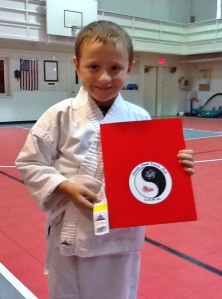 Back in November I wrote about using a couple of new tools for motivating students and managing/tracking behavior, Class Dojo and classbadges.com. We’ve been at it for a few months now, and I’ve learned a few things.
Back in November I wrote about using a couple of new tools for motivating students and managing/tracking behavior, Class Dojo and classbadges.com. We’ve been at it for a few months now, and I’ve learned a few things.
1. I am pretty good with the whole Positive Behavior Management thing, and using the dojo helps me to stay on track. Since every point that a child gets has to be immediately classified, I can give specific feedback about behavior–no “caught being ‘good'” scenarios for me! And I’ve trained my students that, if another staff member hands them that kind of thing, they need to ask WHY they are being rewarded. Because guess what? Before I taught them to ask, most student did NOT know why they were getting little reward cards.
2. I have some routine items that students expect. Each day I pick one or two points that everyone gets a dojo point opportunity on–sometimes as simple as having first and last name at the top of assignments, other times showing reflective listening skills in partner talk. Y’know, positive behaviors. That keeps me from forgetting completely as we get immersed in lessons.
3. I kind of suck at tracking negative behaviors. I am not as consistent about making sure that these behaviors are recorded in the dojo. It’s just so HARD to lose instructional time, even a few seconds beyond that already lost in giving corrective feedback and problem-solving these behaviors. I haven’t got this part down. Yet.
4. So far students are still invested in the Dojo leveling process I’ve cooked up, and I haven’t seen any competitiveness or jerk-like behaviors. Kids have their badges displayed proudly, stuck on their desks or on a binder. We do a badge/dojo mini-ceremony once every two weeks, and the students seem to be invested in earning badges.
5. The struggle is keeping each “level” fresh. We’ve talked about how, in most games, leveling up sometimes comes with rewards, and sometimes just comes with the glory of achievement. Students are at various levels, from Level 2 to Level 4, and most have earned some achievement badges that are separate from the dojo/leveling, for things like mastering math facts or visiting a local museum or planetarium on their own time. I want to do more event-based badges, just for the fun of it. Partly because, that’s how achievements in most games work, and also because I don’t want this to become a “grind-fest” for points and levels. (Non-gamers–grinding in a game is when you have to complete tasks that are repetitive and non-engaging simply to move forward in a game.)
 I am still pretty excited about this aspect of our classroom community, and ready to take some next steps. First, I’d like to have students design some achievements. Second, I think I’m ready to invite parents into this experience more. Class Dojo has a reporting form and classbadges has special logins for both students and parents to view achievements.
I am still pretty excited about this aspect of our classroom community, and ready to take some next steps. First, I’d like to have students design some achievements. Second, I think I’m ready to invite parents into this experience more. Class Dojo has a reporting form and classbadges has special logins for both students and parents to view achievements.
So this week, students will work in groups to design proposals for achievement and also perks for leveling. I’ll get back to you on that.
One more thing. I would not–no way, uh-uh, forgetaboutit–attempt classroom management/motivation stuff this complex without the support of these technology tools. Time is an incredibly precious resource to all teachers, and I am so not an exception to that rule. The dojo and badge systems are quick to use, easy to manage, and simple to communicate to others.








